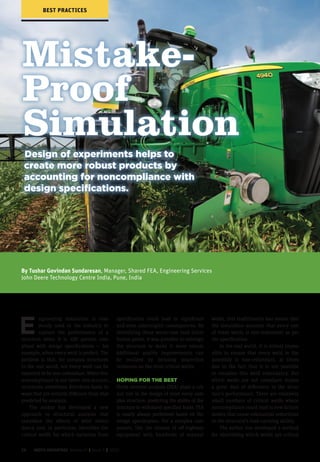The document discusses a novel method for improving the robustness of product designs through structural analysis that accounts for weld redundancy, particularly in complex structures such as vehicle chassis. By identifying critical welds where noncompliance could lead to significant performance issues, the method focuses inspection and redesign efforts on the most crucial areas, enhancing overall quality and reliability. The use of parametric analysis and automation in simulations allows for effective exploration of design spaces, helping to ensure that products consistently meet or exceed expectations.



